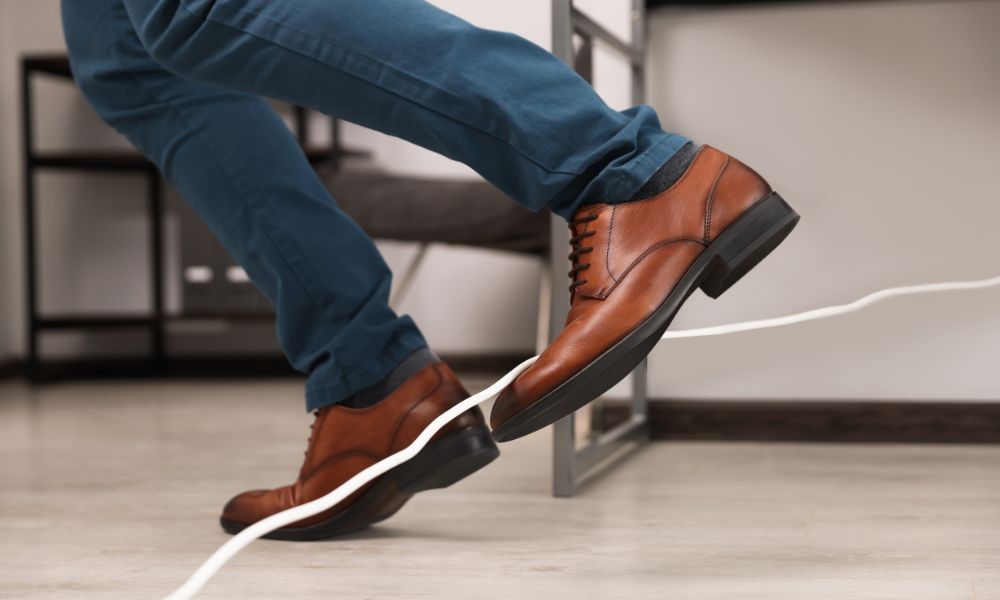Different Tripping Hazards in Your Business

As a business owner, you must prioritize the safety of everyone who steps foot in your establishment. Preventing trips, slips, and falls should be high on your list of safety concerns.
Not only can these accidents result in serious injury and liability, but they can also affect productivity and overall morale. Let’s look at some different tripping hazards that may be present in your business, as well as tips on how to prevent them.
Cords and Wires
One of the most common tripping hazards in any business is loose cables and wires that run from electronic equipment, lights, or other devices. These are often overlooked but can be serious safety issues. Ensure all wires are tidy or hidden from sight and properly secured with tape or clips. If an extension cord is necessary, ensure it’s only a temporary fix and isn’t in areas with high foot traffic.
Uneven Floors
Be keen on your business’s flooring conditions. These are tripping hazards and could lead to falls or accidents. Regularly inspect your flooring for uneven patches or bumps, particularly in high-traffic areas like the entrance, payment counters, hallways, and restrooms.
Poor Lighting
Poor lighting can always pose a tripping hazard for workers and customers. Insufficient lighting in work areas can make it difficult to see potential hazards, especially in areas transitioning from bright to dim to dark. It’s important to install adequate lighting, especially in frequently used areas, such as offices and assembly lines. Also, make sure light switches are easily accessible and in working condition.
Cluttered Work Areas
If you have a warehouse or other work area where tools and machinery see use, you must keep it tidy to prevent tripping. Unsecured boxes, misplaced equipment, and other hazards can quickly become serious injuries. Regularly inspect the work area and enforce protocols to keep it clean and organized.
Wet Floors
Businesses like restaurants and cafes with commercial kitchens often have wet and greasy floors. All staff should receive training on how to clean up spills immediately to avoid a slippery situation. Workers should also put wet floor signs where spillage occurs immediately. Place down absorbent floor mats for workplace safety where wet floors are common.
By taking extra care to identify and prevent tripping hazards in your business, you can create a safer workplace for your employees and customers. Trips and falls can happen to anyone, and the best way to prevent accidents is to determine the potential hazards early on. Awareness of the common tripping hazards and taking preventive measures will keep you one step ahead in ensuring everyone’s safety in your business establishment.





